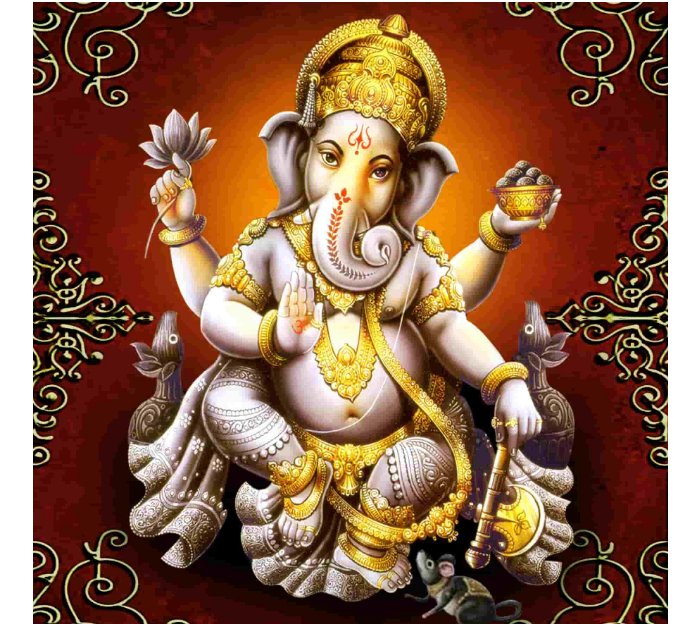Ganesha: Elephant-Headed God Of Knowledge, Learning, Literature And Scribe Of The Mahabharata
A. Sutherland - AncientPages.com - It is commonly believed that the Elephant God, Ganesha (Ganesh, in Hindi word) means success and wealth; therefore people place a statue or a figurine of the Ganesha, in his store, or another place of their business.
Ganesha is one of the best-known and loved deities in the Hindu pantheon of gods and indeed is the most recognized of the Hindu gods outside of India.
Lord Ganesha. Image credit: Jayananda sagar - CC BY-SA 3.0
He is the Lord of Good Fortune, the Lord of Beginnings, and the Remover of Obstacles and evils people meet in their lives, but he can also place obstacles in the path of those who need to be checked. He is also considered the destroyer of pride, selfishness, vanity.
Ganesha protects homes and cars. People often place a Ganesha statue or medallion on the front dash of their cars. Ganesha is also associated with learning and study, scribes, schools, and wisdom.
It is he who transcribed the Mahabharata while the poet Vyasa recited it. The elephant-headed son of Parvati and Shiva, Ganesha (Ganapati) with a bulky belly and four hands, is the subject of many myths.
One myth in the Shiva Purana explains his elephant-head, it is said that he was created by his mother Parvati ( daughter of the mountain) using earth, which she molded into the shape of a boy.
One day, while Shiva was away, Parvati wanted to take a bath but there was no one to guard the door. So she formed a little boy from clay and breathed life into him. She instructed him to guard the entrance to her bathroom, while she bathed.
Ganesha - the God of Powers, Abilities, wisdom, knowledge, intelligence, arts, and Skill Ganesha possesses the traditional bodily attributes of the Hindu gods, which includes superhuman strength, superhuman stamina, endurance, resistance to harm, and enchanted longevity. Image credit: Pradeep Kumar Sharma - CC BY-SA 4.0
Unexpectedly Shiva returned and was furious that the boy at the door would not let him in to see his wife. In his rage, he cut off the boy’s head. Parvati came rushing out and was horrified by what Shiva had done. She told him that this was their son. Shiva ordered a new head to be found for the boy and, as the first animal available was an elephant, so Ganesha gained a new head and became the most unique of the Hindu gods.
The boy was short and fat with a red face, but in some deeper sense, he was very beautiful. He was named Ganesh, “Lord of his father’s ganas” (“hosts”) and a small mouse often showed on his depictions, became his vahana (vehicle) to ride on.
Ganesha is portrayed as standing, sitting, dancing, or crawling as a child, or even sitting on his mother's knee.
His image is found everywhere, in many different forms. Ganesh is widely worshiped in all parts of India, regardless of people’s spiritual affiliations and his characteristics and the attributes that have evolved over the centuries of Indian history.
Written by – A. Sutherland AncientPages.com Staff Writer
Copyright © AncientPages.com All rights reserved. This material may not be published, broadcast, rewritten or redistributed in whole or part without the express written permission of AncientPages.com
Expand for referencesMore From Ancient Pages
-
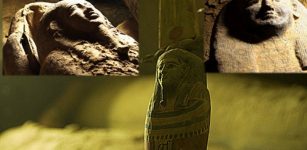 Collection Of 2,500 Years Old Sealed Coffins Unearthed In Saqqara, Egypt
Archaeology | Sep 8, 2020
Collection Of 2,500 Years Old Sealed Coffins Unearthed In Saqqara, Egypt
Archaeology | Sep 8, 2020 -
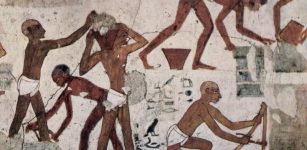 World’s First Documented Labor Strike Took Place In Ancient Egypt In The 12th Century BC
Ancient History Facts | Jun 7, 2016
World’s First Documented Labor Strike Took Place In Ancient Egypt In The 12th Century BC
Ancient History Facts | Jun 7, 2016 -
 Why Is Europe Called Europe?
Ancient History Facts | Apr 21, 2016
Why Is Europe Called Europe?
Ancient History Facts | Apr 21, 2016 -
 DNA Taken From Cement On Hairs Belonging To Ancient Mummies Shed Light On South American Ancestry
Archaeology | Dec 29, 2021
DNA Taken From Cement On Hairs Belonging To Ancient Mummies Shed Light On South American Ancestry
Archaeology | Dec 29, 2021 -
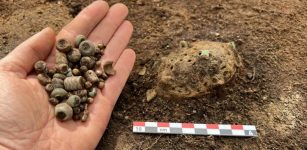 Amazing Artifacts Found In Viking Double Grave In Norwegian Garden
Archaeology | Jul 10, 2023
Amazing Artifacts Found In Viking Double Grave In Norwegian Garden
Archaeology | Jul 10, 2023 -
 New Tool-Making Timeline For East Asian Hominins – Study
Archaeology | Mar 9, 2024
New Tool-Making Timeline For East Asian Hominins – Study
Archaeology | Mar 9, 2024 -
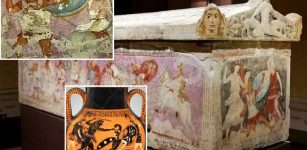 Sarcophagus Of The Amazons: Etruscan Coffin With Paintings Of Dynamic Fighting Scenes Of Greeks With Amazons
Featured Stories | Oct 18, 2022
Sarcophagus Of The Amazons: Etruscan Coffin With Paintings Of Dynamic Fighting Scenes Of Greeks With Amazons
Featured Stories | Oct 18, 2022 -
 Codex Washingtonianus Contains A Passage Not Seen In Any Other Biblical Manuscript
Artifacts | Aug 4, 2015
Codex Washingtonianus Contains A Passage Not Seen In Any Other Biblical Manuscript
Artifacts | Aug 4, 2015 -
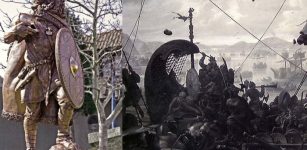 Kylfings – Unknown Warriors Mentioned On Norse Runes – Were They Members Of The Varangian Guard?
Civilizations | Mar 15, 2018
Kylfings – Unknown Warriors Mentioned On Norse Runes – Were They Members Of The Varangian Guard?
Civilizations | Mar 15, 2018 -
 Mysterious Balochistan Sphinx Has An Ancient Story To Tell – But Is An Advanced Ancient Civilization Or Mother Nature Hiding Behind The Story?
Featured Stories | Feb 3, 2018
Mysterious Balochistan Sphinx Has An Ancient Story To Tell – But Is An Advanced Ancient Civilization Or Mother Nature Hiding Behind The Story?
Featured Stories | Feb 3, 2018 -
 Indian Black Earth And Biodiversity Of The Amazon – New Study
Archaeology | Jun 24, 2020
Indian Black Earth And Biodiversity Of The Amazon – New Study
Archaeology | Jun 24, 2020 -
 Brutus Of Troy: First King Of Britain Or Just A Myth?
Featured Stories | Feb 16, 2016
Brutus Of Troy: First King Of Britain Or Just A Myth?
Featured Stories | Feb 16, 2016 -
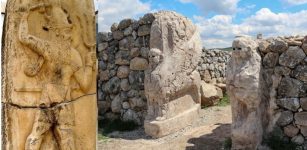 Drought Accelerated Hittite Empire Collapse – New Study Suggests
Archaeology | Feb 12, 2023
Drought Accelerated Hittite Empire Collapse – New Study Suggests
Archaeology | Feb 12, 2023 -
 The Prophecy Of The Rainbow Warriors And Future Of Planet Earth
Featured Stories | Aug 29, 2018
The Prophecy Of The Rainbow Warriors And Future Of Planet Earth
Featured Stories | Aug 29, 2018 -
 Unique Miniature Roman Gold Lock Smaller Than A One-Euro Coin Discovered In Germany
Archaeology | Jan 31, 2025
Unique Miniature Roman Gold Lock Smaller Than A One-Euro Coin Discovered In Germany
Archaeology | Jan 31, 2025 -
 Did A Comet Explosion Over North America Lead To Downfall Of Ancient Hopewell Culture?
Archaeology | Feb 2, 2022
Did A Comet Explosion Over North America Lead To Downfall Of Ancient Hopewell Culture?
Archaeology | Feb 2, 2022 -
 Oldest Olive Oil Press Facilities Owned By Mysterious Woman ‘Arete’ Unearthed In Antalya, Turkey
Archaeology | Apr 2, 2017
Oldest Olive Oil Press Facilities Owned By Mysterious Woman ‘Arete’ Unearthed In Antalya, Turkey
Archaeology | Apr 2, 2017 -
 On This Day In History: Roman Emperor Caligula Was Born – On August 31, 12 AD
News | Aug 31, 2016
On This Day In History: Roman Emperor Caligula Was Born – On August 31, 12 AD
News | Aug 31, 2016 -
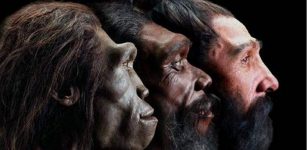 Homo Erectus Was Too Lazy And Went Extinct
Archaeology | Aug 14, 2018
Homo Erectus Was Too Lazy And Went Extinct
Archaeology | Aug 14, 2018 -
 Cedar – Sacred Tree With Medicine Power In Native American Beliefs
Featured Stories | Aug 26, 2024
Cedar – Sacred Tree With Medicine Power In Native American Beliefs
Featured Stories | Aug 26, 2024


